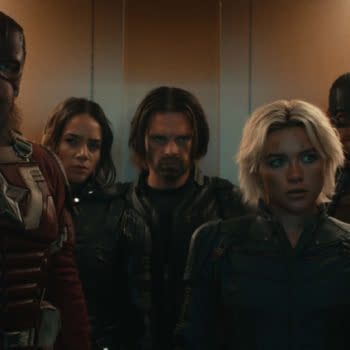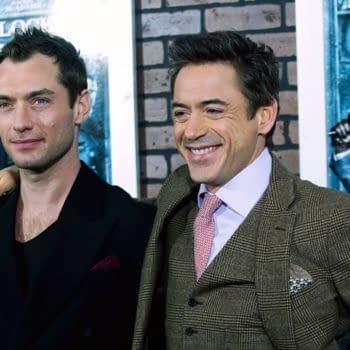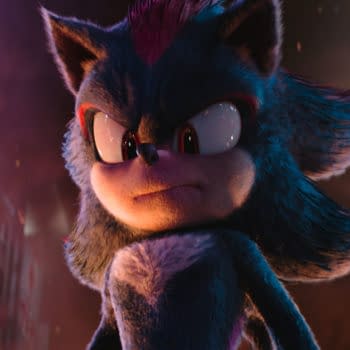Posted in: Movies, Recent Updates | Tagged: 3d, kodak
As Kodak File For Bankruptcy, The Future Of Cinema Is Unveiled

If Kodak does crumble then it will be both a sad day for cinema, and also a landmark in the move forward to the future of filmmaking and the age of digital cinematography. I'm not referring purely to 3D – a technique which still divides many with strong opinions both for and against it – but also to the release of films in higher framerates. Films shown at 60fps, for example, would not suffer the ever-present problem of motion blur shown in this still from The Dark Knight.
As Jon Landau said in a recent Q&A for Titanic 3D, shooting at 24fps that originated when "talkies" first started coming into fashion, and is now hopelessly outdated. Next year, The Hobbit will become the first film to be released in 3D at 48fps, and in Craig Skinner's interview with director Douglas Trumbull last year it was also suggested that methods of shooting and screening film are in desperate need of an upgrade.
I think one of the problems with the movie industry right now is that the way films are presented in cinemas is very substandard … The colour saturation is low, the frame-rate is low, the screen is relatively small, it's rectangular and usually flat. So there's nothing close to the days when I grew up with movies where we had Cinerama and deeply curved 90-foot wide screens and you could create a kind of spectacle, event movie which is where I started with 2001. That's all pretty much gone. It's alive to a certain extent in IMAX theatres but even IMAX has converted now to 2K digital projectors on smaller screens. So not anywhere in the industry is there a kind of spectacular exhibition format. Then you have the additional problem of 3D projection which reduces the brightness to an average of 2.5 foot-lamberts, which is way way too dim to create any sense of spectacle. It creates a lot of eye-strain and a lot of problems with brightness, so you see very little colour saturation, very little contrast, you're seeing a really sub-standard image.
Then you have 24 frames-per-second, which has been the standard in the industry for ever, since talking movies came in, which has been revealed to the professionals in the industry to be inadequate for 3D because the blurring and strobing that happens at 24fps really disturbs a clear perception of 3D. So they have to slow down the action and try and keep it from blurring and strobing to hold the 3D image together. The result is that Peter Jackson is now shooting The Hobbit in 3D at 48fps, Jim Cameron is planning to shoot Avatar 2 and 3 at 60fps, if not 48.
I'm shooting films right now at 120fps in 3D and I know that the result is absolutely stunning but very few people on this planet have actually seen that, yet …I don't see right now any visible advantage to go even higher than 120 frames, I think that's about as much as the human eye can absorb, but combining 120 frames and high brightness and gain screens that are very wide and large with a different seating configuration is a huge epic change that will take some time to effect. But I'm working on it.
Another story that broke just yesterday was that Qube Cinema screened Melissa Butts' film Space Junk 3D at 60fps 4K 3D at a demo in Galveston, Texas, the first film of its kind to be screened in this way. The demo compared the same footage shown at 24, 48 and 60fps and when screened in the latter format the motion blur was all but eliminated and the audience was capable of seeing rich detail even during fast movements. Upon seeing her film on the screen, the director noted that:
"All the hard work we put into shading, lighting and textures was that much more brilliant and remarkable… With all the detail, everything just looks and feels more real."
Shooting on film still has a place in cinema for directors and cinematographers who want to achieve a certain aesthetic, but the industry as a whole is not holding back for nostalgia's sake. Instead, technological innovation is allowing audiences to experience films in ways never before thought possible, and the introduction of films screening at higher framerates will test the limits of interaction between the human eye and moving pictures. Digital cinematography is no longer a cheaper substitute for shooting on film, as it was less than a decade ago, and is fast become the preferred and improved method of filmmaking as a whole. As Trumbull says in the demo video below:
It used to be that everybody, digitally, wanted to make it look like film. But we'd kind of like to skip that and say, 'No, we want to make it look great.'
[youtube]http://www.youtube.com/watch?v=NkWLZy7gbLg[/youtube]
Who else is excited?















